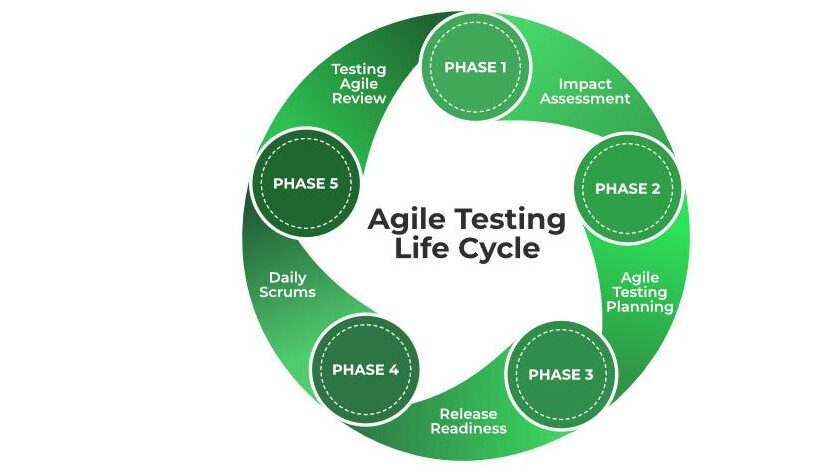Visual Testing in Agile Development: Integrating QA into the Development Lifecycle

The UX and UI of modern applications have come a long way. Modern app infrastructure can adapt to various screen sizes, hardware restrictions, or software configurations. Moreover, the users can use a single application to perform multiple tasks at the same time. However, to serve all these purposes, the application architecture and source code need to access multiple elements at the same time. So, to ensure the stability of this interface, the app testers must integrate advanced testing processes like visual regression testing.
It is also important to initiate proper quality assurance testing to ensure not only the proper placement of all the user interface elements but also their functionality on multiple devices and other configurations. During this process, the app developers also have to ensure that their visual test cases align with the requirements of the modern Agile development process.
So, with this article, we will understand how the application developers can integrate visual testing with the Agile development life cycle. We will also go through some of the best practices that can help the developers and testers improve the efficiency of the entire testing and development infrastructure.
Contents
Exploring Visual Testing
In the context of software development, visual testing is a process of evaluating the Graphical User Interface and other visual elements of an application. The goal of this process is to ensure that all these factors meet the design specifications and expectations. It also aims to identify and address visual defects or discrepancies that may affect the overall user experience. This is a very crucial process to maintain a polished and professional appearance of software applications, graphical interfaces, and websites.
Some of the key aspects of modern visual testing are as follows:
- Consistency of User Interface
Using visual testing, the developers can verify that all the UI elements across different screens and pages have the same layout, color schemes, fonts, and overall styling. This consistency contributes to a user-friendly and cohesive experience.
- Alignments and Layout
In this process, the developers check for the correct positioning and alignment of various UI elements including text boxes, images, and buttons. Misalignments or layout issues can negatively impact the usability and aesthetics of the application.
- Image and Icons
Using visual testing, the developers can ensure that icons and images are correctly displayed and at the correct resolution. This process also involves checking for missing or distorted images that can affect the visual appeal of the application being developed.
- Color and Styling
Verification of font styles, color schemes, and styling elements is crucial to maintaining a visually pleasing and brand-consistent appearance. Using visual testing, testers can identify issues related to font sizes, color contrast, and other styling aspects.
- Responsive Design
Since there are various devices in the present market with different screen sizes, visual testing is essential to assess how the application responds to different screen resolutions and orientations. This approach ensures a consistent and visually appealing experience across multiple devices.
- Cross-Browser Compatibility
It is a crucial process to connect visual testing across different web browsers to identify any rendering discrepancies. This is because various browsers may interpret CSS styles or HTML elements differently. This in turn leads to visual inconsistencies that need to be addressed during the development and testing process.
- Integration with Automation Testing
The testers can integrate visual testing into automated testing frameworks to allow the automatic detection of visual defects. This approach is part of the continuous integration and continuous delivery process. Automated visual regression testing also allows the developers to save a lot of company time and resources involved in the troubleshooting and debugging process.
QA testers can either perform visual testing manually or automate it using specialized tools that capture screenshots and compare them against baseline images or expected results. The integration of visual testing into the development process helps catch visual defects early which reduces the likelihood of such issues reaching the production phase.
Understanding Agile Development
The term Agile development refers to a set of practices and principles for software development that prioritizes collaboration, flexibility, and customer satisfaction. This is an incremental and iterative approach to software development that focuses on delivering functional and small pieces of software in short time frames.
These frames are typically in 2 to 4-week cycles and are known as sprints or iterations. Let us now take a brief look at some of the key principles of modern Agile development:
- Customer Collaboration Over Contract Negotiation
The core concept of Agile emphasizes the importance of involving stakeholders and customers throughout the development process. This approach ensures that the delivered product meets their needs and expectations.
- Individuals and Interactions over Processes and Tools
Agile development values the contributions of individuals and promotes effective communication and collaboration within the application development team. While it acknowledges the importance of tools and processes, it lays its primary emphasis on the people involved.
- Working Software and Comprehensive Documentation
Documentation is indeed important, however, Agile prioritizes the delivery of working software. Its primary focus is in creating a product that adds value rather than extensive documentation which may not directly contribute to the end goal of the application development process.
- Responding to Changes over Following a Plan
Agile recognizes that requirements and priorities can change with time. It also encourages teams to be adaptable to these changes. So, rather than rigidly following predefined plans, Agile development embraces changes to deliver the most valuable product according to the current requirements of the software industry.
- Embracing Changes
Modern Agile methodologies like Scrum or Kanban allow frequent reassessments and adaptations in the application infrastructure. So, teams can regularly reflect on their processes and outcomes, incorporating feedback to improve continuously.
Some of the crucial benefits of Agile development include faster time to market, improved collaboration between development and business teams, increased flexibility to adapt to changing requirements, and also higher customer satisfaction.
Integrating Visual Testing with Agile Development Lifecycle
Visual testing in Agile development involves incorporating quality assurance practices directly into the development process. This approach ensures the desired standards of the visual aspects of an application or website. It also helps to identify and address visual defects early in the development life cycle. So, the testers can improve the overall product quality and reduce the resource consumption associated with the process.
Let us take a look at some of the key considerations for integrating visual testing with the modern Agile development life cycle:
- Efficient Collaboration Between Developers and QA
The first step is to create a strong collaboration between the quality assurance professionals and the developers of the company. For this approach, it is important to encourage open communications and a regular feedback loop. It will also help to ensure both teams understand the visual requirements and expectations.
- Use of Automated Visual Testing Tools
We advise companies to invest in automated visual testing tools that can compare and analyze screenshots of the application or website. These tools can also identify differences between actual and expected visual elements. So, these tools help in catching visual defects at earlier phases of the development cycle.
Modern cloud platforms like LambdaTest allow developers to achieve this goal while executing the test cases on real devices through remote servers. While using LambdaTest, the developers can execute automated visual regression testing using the Selenium WebDriver. It also provides additional features like comprehensive test reports, real-time activity logs, and bug trackers.
The following code snippet will allow the developers to execute automated visual regression testing with LambdaTest:
- Inclusion of Visual Testing with Continuous Integration
It is important to integrate all the visual test cases into the CI pipeline to automatically execute them whenever there is a code change. This approach also ensures that the visual aspects are continuously monitored, and any regressions are detected at early phases.
- Defining Visual Baselines
The testers must establish visual baselines for components of the application or key pages. These baselines will serve as a reference for comparing the visual elements during automated regression testing. It will also help to identify any unintended visual changes.
- Testing the Responsive Design
The testers must ensure that the visual test cases include checks for a responsive web app design. In this step, the testers must verify the application displays all the information correctly on various devices and screen sizes. During this step, it is also important to consider factors like orientation and resolutions.
- Considerations for Better Accessibility
It is a good approach to integrate visual testing for accessibility to ensure that the application complies with modern accessibility standards. This approach will involve checking the visual elements including font sizes and color contrasts to guarantee a positive user experience even for individuals with disabilities.
- Cross-Functional Testing
The app developing companies can encourage the execution of cross-functional testing where quality assurance testers, developers, and stakeholders collaborate to identify and address visual issues. This approach ensures that everyone has a shared understanding of visual requirements and can positively contribute towards maintaining a high level of visual aesthetic quality.
- Implementation of Continuous Learning and Improvement
We would advise the visual testers and developers to regularly review and update visual testing practices based on evolving design standards, changes in the application, and feedback. It is also important to foster a culture of continuous learning and improvement. All these practices will allow the app-developing companies to stay ahead and avoid potential visual defects in the application infrastructure.
- Efficient Documentation and Training
Some of the key practices towards efficient visual testing in modern Agile development include documenting visual testing processes, implementing best practices, and providing proper training to team members. This process ensures that everyone involved in the development process understands the importance of visual testing. It also helps to spread proper awareness about the effective implementation of modern visual test cases.
So, by integrating visual testing into the Agile development process, the app developing teams can enhance the overall quality of the product. It also helps to reduce the risk of visual defects reaching production and finally delivers a more polished and visually appealing user experience.
The Bottom Line
Although the adaptation of visual testing with Agile development is widely used and successful in many contexts, the specific implementation and practices may vary between teams and organizations. Moreover, the application being developed, the target audience, and the intended purpose also have a defining factor in these strategies.
The developers and testers must have a clear conception of their product and their target audience. Moreover, by understanding the target market, the application developers and testers can incorporate various features that can help them reach a wider section of end users.




